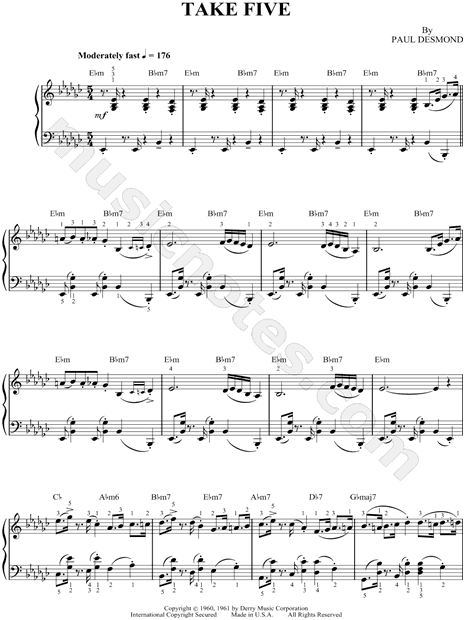

The Music Perception article cites an earlier study that found that Studies have also shown that the Western preference for even, symmetrical rhythms is a learned behavior. North Americans, they found, had difficulty producing complex metrical patterns-even those with, as the article specifies (kind of amazingly), "high amounts of tapping experience and music training." Their tapping frequently stretched out to resemble something more like an even beat. The authors of the Music Perception article conducted a study in which participants were asked to tap along with recordings of drum patterns played over Balkan folk melodies in irregular meters, then continue tapping out the rhythm once the drum pattern was turned off, then in the absence of both the drum pattern and the melody.

"Irregular" time signatures are anything but unusual in other parts of the world-some musical cultures from Africa, Asia, Latin America, and the Balkan Peninsula commonly use metric structures that don't follow the same set of rules as Western music, according to an article called "Synchronization and Continuation Tapping to Complex Meters" for a 2006 edition of Music Perception: An Interdisciplinary Journal.īut people raised in North America often have a particular trouble with irregular time signatures. Time signatures like these are often known as "irregular," "complex," or "asymmetrical" time signatures. For example: Try clapping along with the original Mission: Impossible theme, which is also in a 5/4 time signature. (Hence the title.) When there are five, seven, eleven, or almost any number of beats in a measure that doesn't divide evenly into twos or threes, the beats can become non-isochronous-meaning the emphasized beats, the ones you would tap your foot along with, aren't evenly spaced. "Take Five," though, is written and performed in a 5/4 time signature, as my jazz-fan colleague David Graham mentioned yesterday-meaning there are five beats per measure.
#Take five time signature how to#
As Justin London, a music professor at Carleton College, puts it in " How to Talk About Musical Metre," "Western music theory, from the 19th century through Lerdahl and Jackendoff (1983) has presumed meter to be inherently isochronous." In other words, when you tap your foot to a common piece of Western music, be it one by Katy Perry or Tchaikovsky, your taps will have regular time intervals between them. Most Western music is dependent on a structure with two, three, or four beats in a measure-or some multiple of those-with even spaces between the emphasized beats. TO THE NAKED EYE, IT MAY APPEAR THAT: Jazz pianist Dave Brubeck, who died Wednesday, will be remembered for recording one of the most beloved jazz melodies of its era: 1959's distinctive, serpentine "Take Five," which was written by Brubeck's collaborator Paul Desmond (well, maybe it was a joint effort) and performed by their band, The Dave Brubeck Quartet.īUT ACCORDING TO SOME EXPERTS WHO THOUGHT REALLY HARD ABOUT THIS: There's another reason why the popularity of "Take Five" is remarkable: It's performed in a musical structure that people in the Western world often show cognitive resistance to.

'The League': Fantasy-Football Hilarity or Commentary on Masculinity?.At Its Core, the 'Twilight' Saga Is a Story About _.


 0 kommentar(er)
0 kommentar(er)
